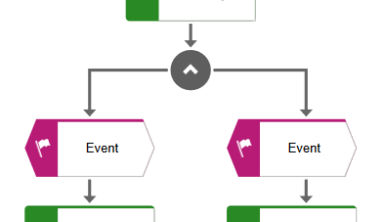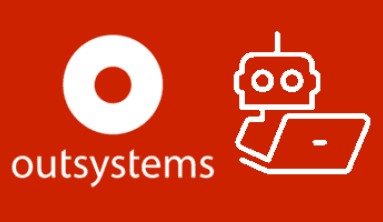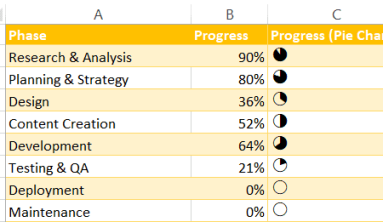In this post, we look at how OKR compares to SMART Goals.

SMART goals are a popular way of creating goals that many organizations use to achieve success. This post will look at the similarities and differences. If you’re looking to move from SMART goals to OKRs, once you’ve read this post, you’ll have a good idea of where to start.

We’ll break this post into sections, starting with a recap of OKR, a recap of the SMART criteria, and a comparison at the end.
What is OKR?
OKR is a goal management framework that helps leaders lead their teams from A to B. Some of the benefits of OKR include, improved focus, increased transparency, and better alignment between teams. Invented by Andrew Grove at Intel and later popularized by Google, OKR has become well known amongst Silicon Valley tech companies and is being adopted by many organizations across the world.

OKR provides a simple structure and criteria for creating business goals as well as a number of rules and best practices organizations can adopt.
How do OKRs work?
A good OKR consists of two elements: an Objective and one or more Key Results. At Perdoo, we introduced a third element: Initiatives.
Objectives represent a destination. They answer the question “Where do I need to go?”
- Objectives set a clear direction and are inspiring
- Objectives DO NOT contain a number.
Example: Turn our website into a lead generation machine
Key Results measure progress toward an Objective. They answer the question “How do I know I’m getting there.”
- Key Results are metrics that measure the success of an Objective, like the number of sales (Get examples for Sales OKRs) or website traffic (Get examples for Marketing OKRs). They are things you influence.
- Key Results are not things you do, like completed projects or launched products.
Example: Achieve 400 website leads per month
Initiatives describe the work done to drive progress on Key Results. They answer the question “What will I do to get there?”
- Initiatives are projects or other activities that you believe will influence your Key Results.
- Initiatives do not indicate success; success is dependant on progress of Key Results.
Example: Create 8 new landing pages
In this video, Perdoo CEO Henrik-Jan van der Pol explains the power of structuring goals as OKRs, using an everyday example:
What are SMART goals?
SMART is a set of criteria for creating goals, attributed to the work of Peter Drucker and his framework Management By Objectives (MBO).

Unlike other frameworks which cover strategy creation, organizational hierarchy, and performance management, SMART is a simple structure that describes how to create and measure progress towards goals. In this sense, the SMART criteria and an OKR can be compared as two alternate ways to structure a goal.
The SMART criteria list five things that a goal must fulfill:
- Specific
- Measurable
- Achievable
- Relevant
- Time-bound
If we take each of these SMART criteria individually, we can look at the details behind setting smart goals.
How SMART goals work
Specific
A SMART goal must be specific by providing a clear description of what needs to be achieved. It should be understandable for everyone contributing to it.
For example: We close more enterprise customers in North America.
This goal has a clear scope (North America enterprise customers) provides a description of what needs to be accomplished (close more of them). However, it doesn’t tell you anything about how success is measured, why it matters, and when it needs to be achieved.
Measurable
To know when a goal is achieved it must be measurable. A metric should be included, with a target to reach that indicates success.
For example: We close 10,000 enterprise customers in North America.
This goal has a target you can measure progress against. Once 10,000 enterprise customers in North America are closed, the goal will be considered successfully achieved.
Achievable
A goal is achievable when it is within the realms of possibility, given the available resources and constraints within your control. This doesn’t imply that it should be easy.
Taking our previous example, since closing 10,000 customers represents an unrealistic target the sales team decides to amend it.
For example: We close 750 enterprise customers in North America.
This goal might be difficult but it is possible to achieve. However, it’s still not yet clear why achieving this goal matters.
Relevant
A goal is relevant when it’s consistent with, and leads to, an outcome that contributes toward other organizational goals.
For example: We close 750 enterprise customers in North America to expand our market share.
This goal is now connected to the company’s larger goal to “expand our market share”. The only thing that’s still missing is a deadline.
Time-bound
A time-bound goal has a start and end date. An end date is important, since this is when the goal will be reviewed, to see whether or not it’s considered a success.
For example: In 2018, we close 750 enterprise customers in North America to extend our global footprint.
The goal now has a scope and duration and meets all SMART criteria.
What OKRs and SMART goals have in common
The first thing OKRs and SMART goals have in common is their history. Both goal setting approaches date back to Peter Drucker’s theory of Management by Objectives (MBO). OKRs and SMART goals are a development of MBO and support the belief that goals are key to achieving organizational success.
OKRs and SMART goals both contain a number of criteria that describe their structure. While OKR might look simpler than a SMART goal, OKR’s three letters cover the same criteria that SMART does.
Here’s a direct comparison between OKR criteria and SMART criteria.

OKR and SMART are also similar in their informality, they have no governing body or commercial certification requirements like Six Sigma and SCRUM. SMART and OKR are open source. Both frameworks were created and refined over time by many different organizations testing what does or doesn’t work. This is in contrast to other management frameworks that have their roots in academia, government, and professional organizations.
The difference between OKR and SMART goals
On the surface, SMART goals and OKRs look similar. They both offer a structure, and they both have rules that help set scope, time frames, and alignment. However, the similarities end here, and where SMART ends, OKR takes over.
SMART views goals in isolation and provides a simple, yet memorable acronym and criteria to describe their structure. OKR also provides a structure but draws a distinct line between the Objective of the goal (what you want to achieve) and how to measure progress towards it using Key Results.
This an area where the “M” in SMART can cause confusion since there are several variations of what the acronym SMART means. For example, the M can stand for measurable, meaningful, or motivational.
Swapping out measurable for meaningful or motivational has the potential to alter the structure and focus of a SMART goal, de-emphasizing the importance of the measurement of progress, something OKR highlights. By contrast, there’s no room for interpretation with OKR. A goal always contains an Objective and Key Results.
OKR doesn’t treat goals in isolation
OKR further differs from SMART because OKRs are created within a framework that describes their relationship to organizational hierarchy and their relationship to organizational timeframes.
The Ultimate OKR is at the very top of the OKR hierarchy and runs for 5, 10, or even more years. It is a goal that combines the company’s vision (where do we want to be in the long-term future?) and its mission (what is our purpose?).
Company OKRs form the second level of the OKR framework and run for one year. They represent company strategy translated into 3 to 5 goals that the entire organization works toward. Company OKRs play an essential part in aligning work across an entire organization, setting a clear focus for all employees and providing a point of reference for Group OKRs.
Group OKRs form the third level of the OKR framework. They run on a quarterly timescale and represent the tactics that teams or departments execute to drive progress toward Company OKRs.

Compared to SMART, OKR provides an additional level of organizational structure and context that goals work within. SMART, in comparison, only considers the formation of goals in isolation, with OKR the relationship between goals across an entire organization is clear.
OKRs vs. SMART Goals – Which of the two should you use?
The SMART criteria are easy to remember, easy to use and work great for personal goal setting. However SMART simply describes a goal in isolation. OKR provides an extra level of organizational context and turns goal setting into a company-wide exercise. With OKR, an entire organization can achieve clarity and focus.
Source: perdoo







